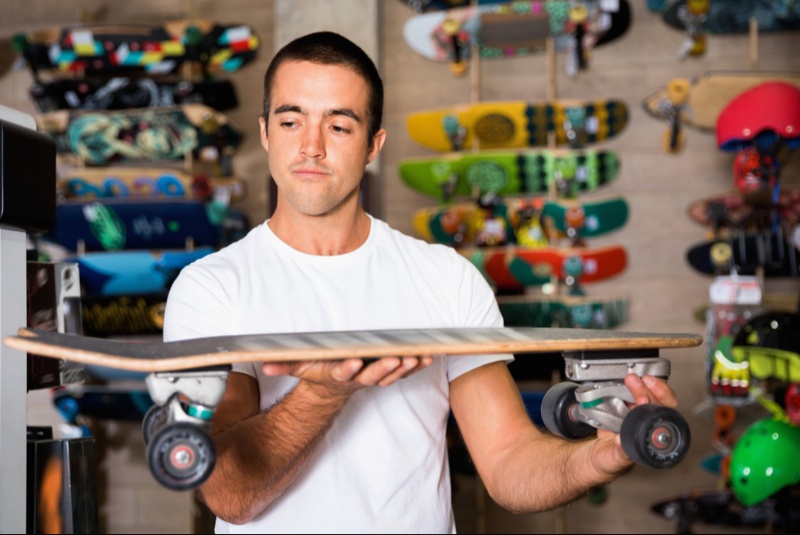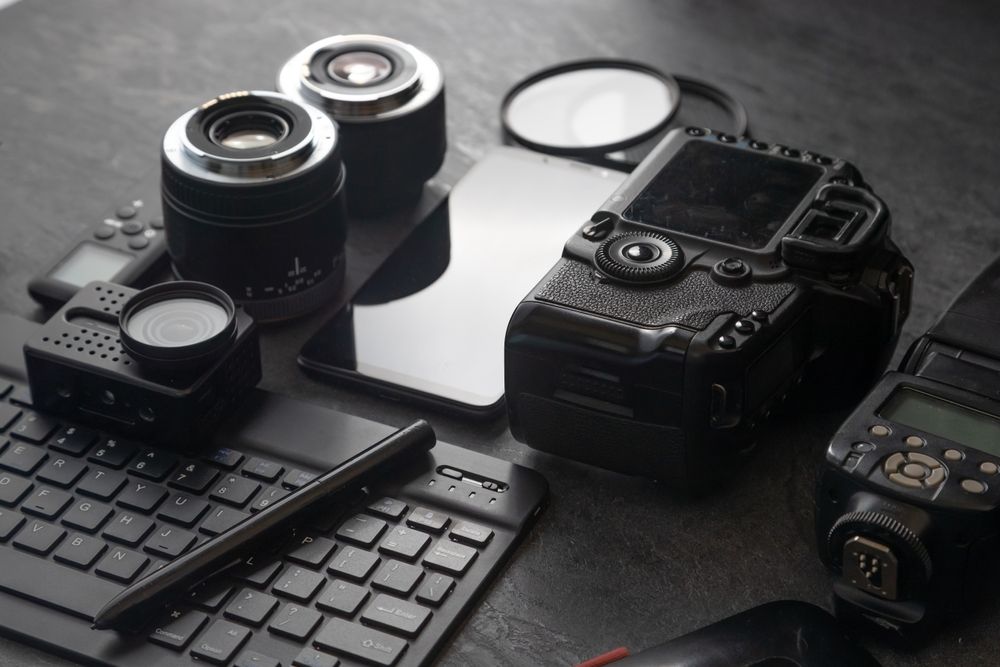Skateboarding is an exhilarating sport that offers a unique blend of athleticism and creativity. Whether you're a beginner or an experienced rider, selecting the right skateboard is crucial for an enjoyable and safe skating experience. This comprehensive guide provides essential tips and insights to help you choose the perfect skateboard, ensuring it meets your riding style, skill level, and personal preferences.
Understanding the Different Types of Skateboards
Skateboards come in various types, each designed for specific styles of riding. The main types include street/park skateboards, cruiser skateboards, longboards, and downhill boards. Street/park skateboards are ideal for tricks and technical maneuvers. Cruisers are great for commuting and casual riding. Longboards offer stability and smooth rides, perfect for beginners and long-distance skating. Downhill boards are designed for high-speed descents and sharp turns. Understanding the different types of skateboards helps you choose one that matches your preferred style of skating, ensuring a satisfying and tailored riding experience.
Considering Deck Size and Shape
The deck is the flat board you stand on, and its size and shape significantly impact your skating. Deck width typically ranges from 7.5” to 8.5”. Narrow decks (7.5” to 8.0”) are lighter and easier to flip, making them ideal for technical tricks and street skating. Wider decks (8.0” to 8.5” and above) provide more stability, suitable for vert skating and cruising. The shape of the deck, including the concave (curvature), kicktail, and nose, affects control and comfort. Considering deck size and shape ensures you choose a skateboard that suits your body size and riding style, enhancing performance and comfort.
Evaluating Deck Material and Construction
The material and construction of the deck influence its durability and performance. Most skateboards are made from 7-ply maple wood, known for its strength and flexibility. Other materials include bamboo, fiberglass, and carbon fiber, which offer varying degrees of stiffness and lightness. Composite decks combine multiple materials for enhanced performance. Deck construction can also feature different pressing techniques, such as cold press or hot press, affecting the board's pop and longevity. Evaluating deck material and construction ensures you choose a skateboard that is durable and responsive, providing a reliable ride.
Selecting the Right Trucks
Trucks are the T-shaped components that attach the wheels to the deck, playing a crucial role in turning and stability. The width of the trucks should match the width of your deck for balanced performance. Trucks come in various heights—low, mid, and high—each suitable for different wheel sizes and riding styles. Low trucks provide stability and are great for street skating, while high trucks allow for larger wheels and smoother rides, ideal for cruising and vert skating. Selecting the right trucks ensures your skateboard handles well, providing precise control and stability.
Choosing the Appropriate Wheels
Wheels affect your skateboard's speed, grip, and ride smoothness. They come in different sizes and durometers (hardness). Smaller wheels (50-54mm) are lighter and accelerate faster, making them suitable for street and park skating. Larger wheels (55-60mm and above) roll over cracks and rough surfaces better, ideal for cruising and downhill. The durometer rating indicates hardness, with higher numbers (e.g., 99A) being harder and faster, while lower numbers (e.g., 78A) are softer and provide better grip. Choosing the appropriate wheels ensures your skateboard performs well on your preferred terrain, enhancing your riding experience.
Understanding Bearings and Their Importance
Bearings are small components inside the wheels that allow them to spin smoothly. They are rated using the ABEC scale, with higher numbers indicating greater precision and speed (e.g., ABEC-7 or ABEC-9). However, some skaters prefer bearings not rated by ABEC but designed specifically for skateboarding, such as Bones Reds. The quality of the bearings affects your skateboard's speed and ride smoothness. Regular cleaning and lubrication extend their lifespan. Understanding bearings and their importance ensures you choose high-quality bearings that enhance your skateboard's performance, providing a fast and smooth ride.

Assessing Grip Tape Quality
Grip tape is the sandpaper-like sheet applied to the top of the deck, providing traction for your feet. High-quality grip tape ensures better control and prevents slipping, essential for performing tricks and maintaining stability. It comes in various colors and designs, allowing for customization. Some grip tapes offer additional features like perforations to prevent air bubbles during application. Assessing grip tape quality ensures your skateboard provides the necessary grip and style, enhancing your confidence and performance on the board.
Considering the Complete Skateboard vs. Custom Setup
When buying a skateboard, you can choose between a complete setup or building a custom skateboard. Complete skateboards are pre-assembled and ready to ride, making them convenient for beginners. They offer good value and balanced components. A custom setup allows you to select each part, including the deck, trucks, wheels, and bearings, tailored to your preferences. This option is ideal for experienced skaters who know their specific needs. Considering the complete skateboard vs. custom setup ensures you choose an option that fits your skill level and personal preferences, providing a satisfying and personalized riding experience.
Evaluating Brand Reputation and Reviews
Brand reputation and customer reviews provide valuable insights into the quality and performance of skateboards. Established brands like Element, Powell Peralta, Santa Cruz, and Zero are known for their high-quality products and innovative designs. Reading customer reviews and expert recommendations can help you understand the pros and cons of different models and brands. Evaluating brand reputation and reviews ensures you invest in a reliable and high-quality skateboard, backed by positive experiences and expert endorsements.
Understanding Your Skill Level and Goals
Your skill level and skating goals significantly influence the type of skateboard you should choose. Beginners should opt for wider decks and softer wheels for stability and control, focusing on learning the basics. Intermediate and advanced skaters can experiment with different deck shapes, sizes, and wheel durometers to suit their specific tricks and styles. Understanding your skill level and goals ensures you choose a skateboard that matches your current abilities and helps you progress, enhancing your overall enjoyment and development in the sport.
Considering Budget and Value
Skateboards come in a wide range of prices, from budget-friendly options to high-end models. Determine your budget and prioritize the features that are most important to you, such as material quality, brand reputation, and specific components. While higher-priced skateboards often offer better performance and durability, there are many affordable options that provide excellent value. Considering budget and value ensures you make a cost-effective purchase that meets your needs and provides long-term satisfaction.
Testing Before Purchase
If possible, test the skateboard before making a purchase. Visit local skate shops or attend skateboarding events where you can try different models. Assess the feel, balance, and performance of the skateboard. Pay attention to how comfortable you feel riding it and whether it suits your style. Testing before purchase ensures you choose a skateboard that meets your comfort and functional needs, avoiding potential disappointments after buying. This hands-on experience can provide valuable insights that specifications alone cannot convey.
Supporting Local Skate Shops and Communities
Supporting local skate shops and communities helps sustain the skateboarding culture and provides access to expert advice and quality products. Local shops often offer personalized service, knowledgeable staff, and opportunities to connect with other skaters. They may also host events, clinics, and competitions, fostering a sense of community. Supporting local skate shops and communities ensures you receive reliable guidance and contribute to the growth of skateboarding culture, enhancing your overall experience.
Choosing the right skateboard involves understanding different types, evaluating deck size and material, and selecting appropriate trucks, wheels, and bearings. Assessing grip tape quality, considering complete vs. custom setups, and evaluating brand reputation and reviews are essential for making an informed decision. Understanding your skill level, considering budget and value, testing before purchase, and supporting local skate shops further guide your choice. Use this comprehensive guide to navigate the market confidently and find the perfect skateboard that offers style, durability, and performance for your skating adventures.




